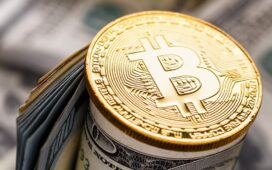Trump fired up global trade tensions by announcing a baseline 10% tariff on all imports starting 5 April, with additional reciprocal tariffs on specific countries from 9 April. India will be hit with a 27% tariff, while China’s rate soars to 54%, up from the previous 20%.
Gift Nifty futures took a hit earlier this morning, dropping nearly 2%, while Indian benchmark indices Nifty 50 and S&P BSE Sensex fell 1% in pre-open trade. However, Nifty 50 and Sensex later trimmed some losses, ending the day’s trade 0.35% and 0.42% lower, respectively.
According to provisional data from BSE, FIIs net sold Indian equities worth ₹2,806 crore but DIIs net purchased ₹221.47 crore on Thursday.
In comparison, Japan’s Nikkei 225 was down 2.77%, Hong Kong’s Hang Seng ended 1.52% lower, and South Korea’s Kospi was down 0.76%.
Market watchers said it’s possible that the impact of tariffs was already priced in, leading to a softer reaction in Indian equities compared to global indices.
Also read | Trump’s tariff tantrum: Asian markets rattled, India fares better
“Not a big change for India, prima facie, as it doesn’t hurt our relative advantage in trade compared to countries such as Bangladesh, Vietnam, etc., where higher tariffs have been slapped and where we can now compete more effectively in traditional sectors such as garments and gems and jewellery,” said Devina Mehra, founder and chairperson, First Global.
Others, however, said that global uncertainties, including a potential slowdown in the US, could mean continued volatility in the Indian markets, notwithstanding the resilience.
The US economy, a key driver of global growth, may witness a slowdown due to tariffs and broader economic concerns, according to Sankaran Naren, chief investment officer at ICICI Prudential Asset Management Company Ltd. “This will likely create a volatile environment for global and Indian markets, even though the Indian economy itself is well-placed to handle these challenges.”
Bonds
Indian bond yields hardened slightly to 6.5% on Thursday on concerns that inflation in the US would limit the room of monetary easing for the US Federal Reserve. Experts said that the yield on the Indian 10-year government paper had softened on Wednesday on the back of the Reserve Bank of India’s (RBI) announcement to infuse liquidity via open market operations.
Also read | India has a re-rethink on green bonds. And a new strategy.
“For bonds, the outlook is favourable,” said Kanika Pasricha, chief economic advisor, Union Bank of India. “Even if RBI did not do a ₹80,000 crore OMO, assuming there are no FPI outflows, system liquidity would broadly stay in surplus and comfortable in the coming months.”
Pasricha said that in May, RBI could pay the government a dividend of ₹2-2.5 trillion, which would support durable liquidity in the system and bonds. “Which is why we expect a downward movement for yields.”
Currency
The domestic currency closed stronger on Thursday at 85.44 against the dollar from 85.51 the previous day. Experts said the rupee could continue to trade with a bit of a depreciation bias through the rest of the year.
“I do not expect a sharp runaway depreciation in the rupee for a couple of reasons. The real effective exchange rate (REER) has already fallen along with a decline in retail inflation; there is also the adjustment in rupee we saw a few weeks ago,” said Dhiraj Nim, economist at ANZ Banking Group.
Also read | Why RBI may again aggressively defend the rupee
Nim said that the currency competitiveness concerns have materially eased and may remain stable as long as inflation remains around 4%. “The acute stress being experienced from equities and bonds outflows has eased,” he said. “A lot of the overvaluation concerns around the equity markets has eased and inflows have stabilised, if not resumed strongly.”
The dollar index also weakened following the tariff announcements. The index tracks the dollar’s performance against six major global currencies.
“Dollar weakness trend has already started and is somewhat overdone, but it might continue for sometime on the back of growth concerns in the US,” said Abhishek Goenka, founder and chief executive of forex advisory service provider IFA Global.
Goenka said the rupee’s delta is not 1:1 with the dollar, especially on the strengthening side, when it drastically reduces. Meaning if the dollar weakens by 1%, the rupee doesn’t strengthen by even 0.3%. “After a certain level, there is a floor, which could be 85 for the rupee. On the upper end, we are looking at 86.5 in the next three to four months.”
Also read | Trump’s tariffs were supposed to boost the dollar. Why the opposite happened.
Dhiraj Relli, managing director and chief executive of HDFC Securities, said the dollar index is anticipated to drift lower due to concerns about a potential US recession and ongoing policy uncertainty.
“A softer dollar, driven by heightened worries over US growth and relatively lower tariffs on Indian goods, is likely contributing to the rupee’s positive trend,” he said. “The recent appreciation of the rupee, which has largely gone unchallenged by the Reserve Bank of India (RBI), has created sufficient room for the exchange rate to absorb.”
Gold
Prices of safe-haven asset gold continued to rise on Thursday, touching ₹90,792 for 10 grams. Experts said that rising trade tensions, triggered by Trump’s aggressive tariff stance, have heightened financial instability, pushing investors toward gold as a shield against uncertainty.
According to Riya Singh, research analyst, commodities and currency at Emkay Global, with fears of a looming recession and growing expectations of Federal Reserve rate cuts, demand for gold continues to climb.
“Additionally, central banks worldwide are steadily increasing their gold reserves, signalling a shift away from reliance on the U.S. dollar,” said Singh, adding that the growing preference for gold reflects deepening concerns over geopolitical tensions and economic volatility.
Also read | Gold set for best quarter since Chernobyl. Miners are doing even better.
Ram Sahgal in Mumbai contributed to this story.





